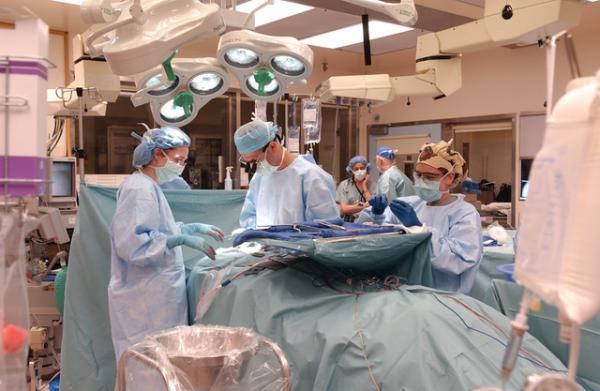A summary of an article on surgical deaths caught my eye because it claimed that most surgical deaths occurred after surgery. Duh! But it came from the Canadian Medical Association Journal, and it is peer-reviewed, so perhaps there was a nugget of information to glean.
The study was part of a large project looking at cardiovascular complications after noncardiac surgery, looking at adults over 45, undergoing surgery in a hospital with at least one overnight stay. It drew global participants from 28 centers in 14 countries; over six years, from 2007 to 2013 and involved only academic, teaching hospitals. The primary outcome was all-cause mortality, secondary outcomes a range of complications. Thirty-day follow up data was obtained from telephone conversations with the patient, or more ominously, the next of kin. Slightly over 40,000 patients were enrolled.
The surgery itself was pretty safe; only five patients died in the operating room. The post-operative deaths, which were few at 1.8% (715 patients) occurred during the next 30 days post-surgery. For nearly 70% of those 715 patients, complications resulted in a protracted hospital stay and death; the other roughly 30% died within the 30 days but at home.
The distribution of those deaths varied by the type of surgery, the geographical region, and the type of post-operative complication.
Major bleeding was the most common complication, followed by myocardial injury, infection, and sepsis. The onset of these complications developed the typical temporal pattern recognizable to most surgeons; major bleeding was usually evident within the day of surgery; myocardial infarctions on post-operative day 1, and sepsis and infection on post-operative day 6.
Using hazard ratios as a measure, sepsis was the most lethal complication, resulting in a higher than 5-fold increase in the risk of death; bleeding, myocardial injury, and infection without sepsis’s systemic component all increase risk about 2.5 fold.
Contemporary journals often use a highlighting technique where they ask, what did we learn? In this instance, not much. We already knew that most patients survive the OR, that post-operative deaths occur later and that more happens in the hospital than at home. The complications are the ones we would anticipate, as are the time frames for their appearance.
The real value of this type of study would be from knowing more about the patient’s preoperative risk assessment and what was or was not done to mitigate the risk. That kind of information gets at the heart of the problem, technique, and judgment, this paper is just a bit of scientism. It makes no difference to the surgeon or patient that major bleeding after surgery can be lethal; we already know that we need to understand why it occurred. A technical error on the part of the surgeon, blood loss resulting in dysfunction of the clotting cascade, inadequate post-operative surveillance, or a combination of these problems?
Same is true for a myocardial injury which was most significant in my specialty, vascular surgery. But we know that going in and in most instances obtain a preoperative cardiac evaluation to treat those at highest risk before our surgical intervention. We have no idea how many of these patients were evaluated preoperatively.
The authors end as they always do. First, they tell us why this is important, after all, in their sample 1.8% of patients died and when you consider 100 million noncardiac surgeries annually on a global basis, that gets to be a lot of people. Second, they suggest that “these complications are promising targets for research on prevention, early identification, and management…” We already know the problems, when are we going to look for some better solutions?
Source: Association between complications and death within 3 days after noncardiac surgery Canadian Medical Association Journal DOI: 10.1503/cmaj.190221




